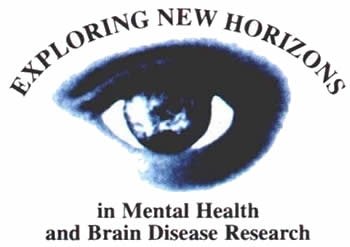NAME OF RESEARCHER
Dr Lucy Adams
NAME OF SUPERVISOR
Prof Lucia Valmaggia and Prof Emily Simonoff
PROJECT TITLE
Investigating the interfaces between technology, autism spectrum disorder, and mental health
CLINICAL ACADEMIC GROUP
Child and Adolescent Mental Health Services (CAMHS)
START & FINISH DATES
Start date: 01/06/2019. Finish date: 31/08/2022
PROJECT DESCRIPTION
This project researched the impact of technology on the mental health of autistic individuals. Autism spectrum disorder (ASD) is a lifelong developmental disorder. Its core characteristics include difficulties interacting and communicating with others and restrictive and repetitive patterns of thought and behaviour. ASD is associated with increased risk of mental health issues, and there are distinct challenges in their assessment and treatment in ASD. Technology may be able to reduce some of these challenges. For this reason, and due to the commonality of anxiety in ASD, research studies that have used technology-based assessments and treatments of anxiety in ASD were reviewed. Further, clinicians’ and service-users’ views of delivering mental health interventions using virtual reality (VR) and ICT (i.e. remote therapy) were explored.
The use of technology in autistic individuals may also negatively impact mental health, as evidence suggests these individuals are more likely to use the internet excessively. An area requiring research attention is social media usage in ASD, particularly as it can be a risk factor for cyberbullying (i.e. bullying over-the-internet) and therefore mental health issues. Further, it is known that autistic children are more likely to experience traditional bullying victimisation and negative effects from this victimisation relative to their typically developing peers. Therefore, the potential risk factors for cyberbullying and its association with mental health issues, as well as factors associated with daily social media usage, were explored for the first-time in autistic adolescents.
PROGRESS IN PAST YEAR
As previously explained in previous interim progress the planned VR case could not be able to go ahead due to the pandemic. The revised project has now been completed, Lucy Adams submitted her thesis, passed her viva and has been awarded her PhD at the end of 2022. A summary of the findings is included below.
What this research has shown.
Autistic individuals are at disproportionately high risk of experiencing mental health issues, and the quality and accessibility of mental health care are reduced in this population. Investigating the impact of using digital technology in mental health research, assessment, treatment, and care for autistic individuals (i.e. digital mental health, DMH) may help to reduce this disparity. This is suggested because of its apparent potential in aiding adaptations that are recommended for autistic individuals to reduce autism-associated complexities in these domains, but equally because it may introduce challenges which are important to identify given the increasing popularity of DMH. The recommended adaptations that digital technology may aid in these domains include the use of individualised and multi-modal approaches.
This project aimed to explore DMH for autistic individuals, specifically directly for autistic individuals themselves, rather than solely for or via parents/supporters. Objectives included identifying its potential feasibility and acceptability, alongside challenges, benefits, facilitators, and other considerations.
The first study was a systematic review of DMH targeting anxiety, which indicated DMH to be broadly feasible and acceptable except when involving social scripts or peer modelling. The review further highlighted research gaps that included the use of (1) virtual reality (VR) exposure therapy for social anxiety (SA) disorder and (2) of remote interventions in general (Adams, Valmaggia, Simonoff, 2022). The first research gap was explored in subsequent studies that explored the process of developing an intervention study with young people, their parents, and therapists. Key considerations identified include introducing VR carefully and ensuring sufficient individualisation. Candidate VR exposure tasks identified surround approaching and conversing with others, experiencing perceived injustice, being the centre of attention, and situations involving novelty and/or lower predictability (Adams, Simonoff, Tierney, Hollocks, Brewster, Watson, Valmaggia, 2022). The second research gap was explored in a third study which focused on the use of telepsychiatry interventions during the pandemic. It commences with a service evaluation of a local trust via the thematic analysis of semi-structured interviews with therapists and young people regarding their experiences (Adams, Adamo, Hollocks, Watson, Brewster, Valmaggia, Jewitt, Edwards, Krisson, Simonoff, 2023). A research study is then presented that involves a mixed methods web-based survey examining clinicians’ views (Adams, Adamo, Hollocks, Valmaggia, Brewster, Watson, Krisson, Simonoff, 2022). Findings broadly indicate that remote delivery was challenging, but overall levels of concern were low, and some service-users favoured it or hybrid delivery.
Implications
Patterns in findings were observed across the studies. Perceived challenges principally include the variability in acceptability, minimal evidence-base, and certain autism-associated difficulties considered to reduce its accessibility such as social avoidance. Perceived benefits surround digital technology holding potential in facilitating the control and monitoring of stimuli and in enhancing the treatment accessibility for certain individuals. Individuals in late adolescence who find in-person interactions difficult, require minimal support, and show technological affinities, are amongst those considered most likely to benefit from DMH interventions. The findings preliminarily indicate that DMH for autistic individuals broadly shows promise and provide a plethora of considerations and avenues to guide future work and clinical implementation.
PUBLICATIONS & CONFERENCES ATTENDED
1. Adams, L., Valmaggia, L. and Simonoff, E., 2022. Technology-based assessments and treatments of anxiety in autistic individuals: systematic review and narrative synthesis. Review Journal of Autism and Developmental Disorders, 9(4), pp.571-595.
2. Adams, L., Simonoff, E., Tierney, K., Hollocks, M.J., Brewster, A., Watson, J. and Valmaggia, L., 2022. Developing a user-informed intervention study of a virtual reality therapy for social anxiety in autistic adolescents. Design for Health, pp.1-20.
3. Adams, L., Adamo, N., Hollocks, M.J., Valmaggia, L., Brewster, A., Watson, J., Krisson, M. and Simonoff, E., 2022. Examining clinicians’ concerns delivering telemental health interventions directly to autistic individuals during COVID-19. Research in autism spectrum disorders, 94, p.101956.
4. Adams, L., Adamo, N., Hollocks, M.J., Watson, J., Brewster, A., Valmaggia, L., Jewitt, E., Edwards, J., Krisson, M. and Simonoff, E., 2023. Autistic young people’s experiences of remote psychological interventions during COVID-19. Autism, p.13623613221142730.
